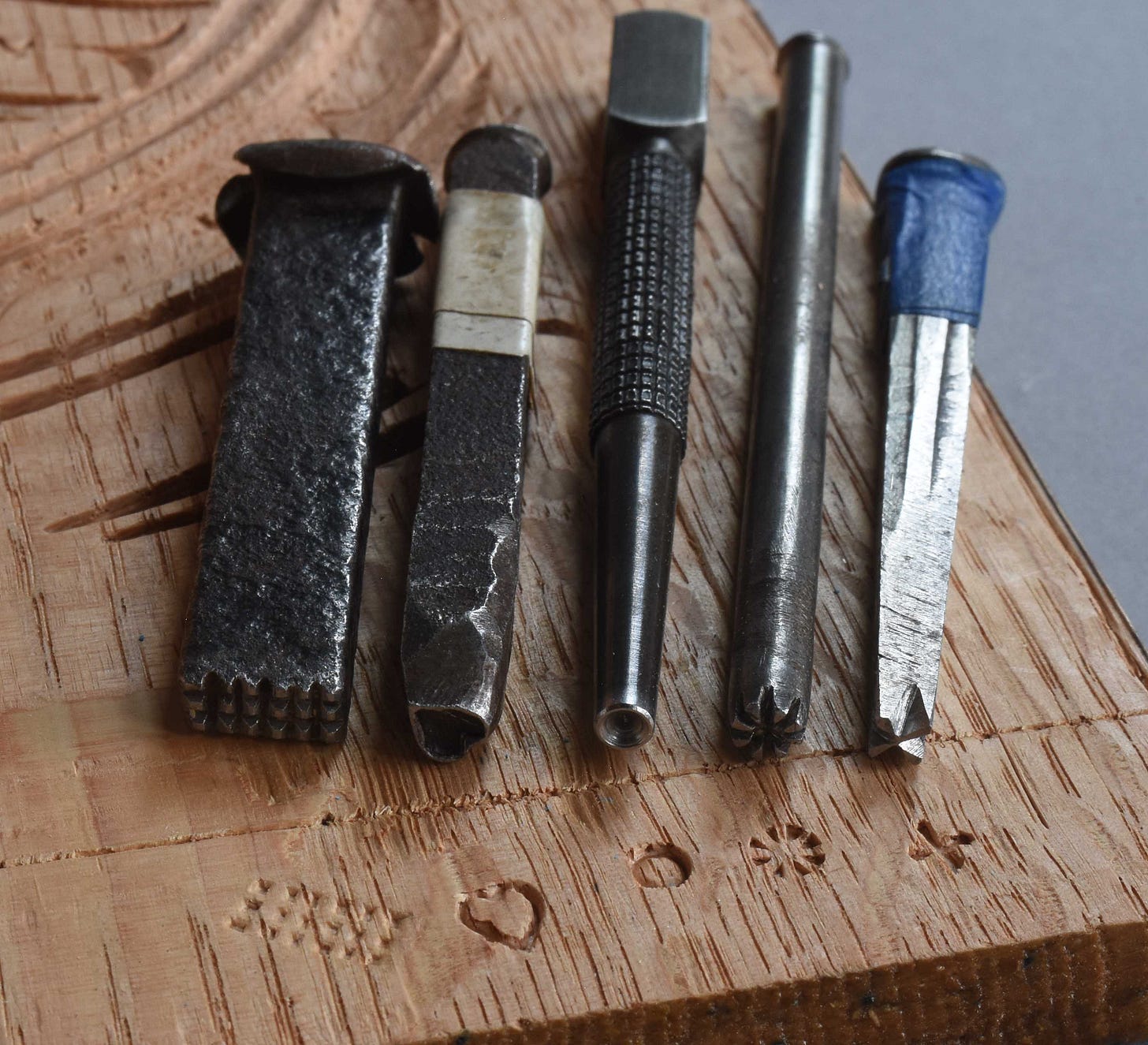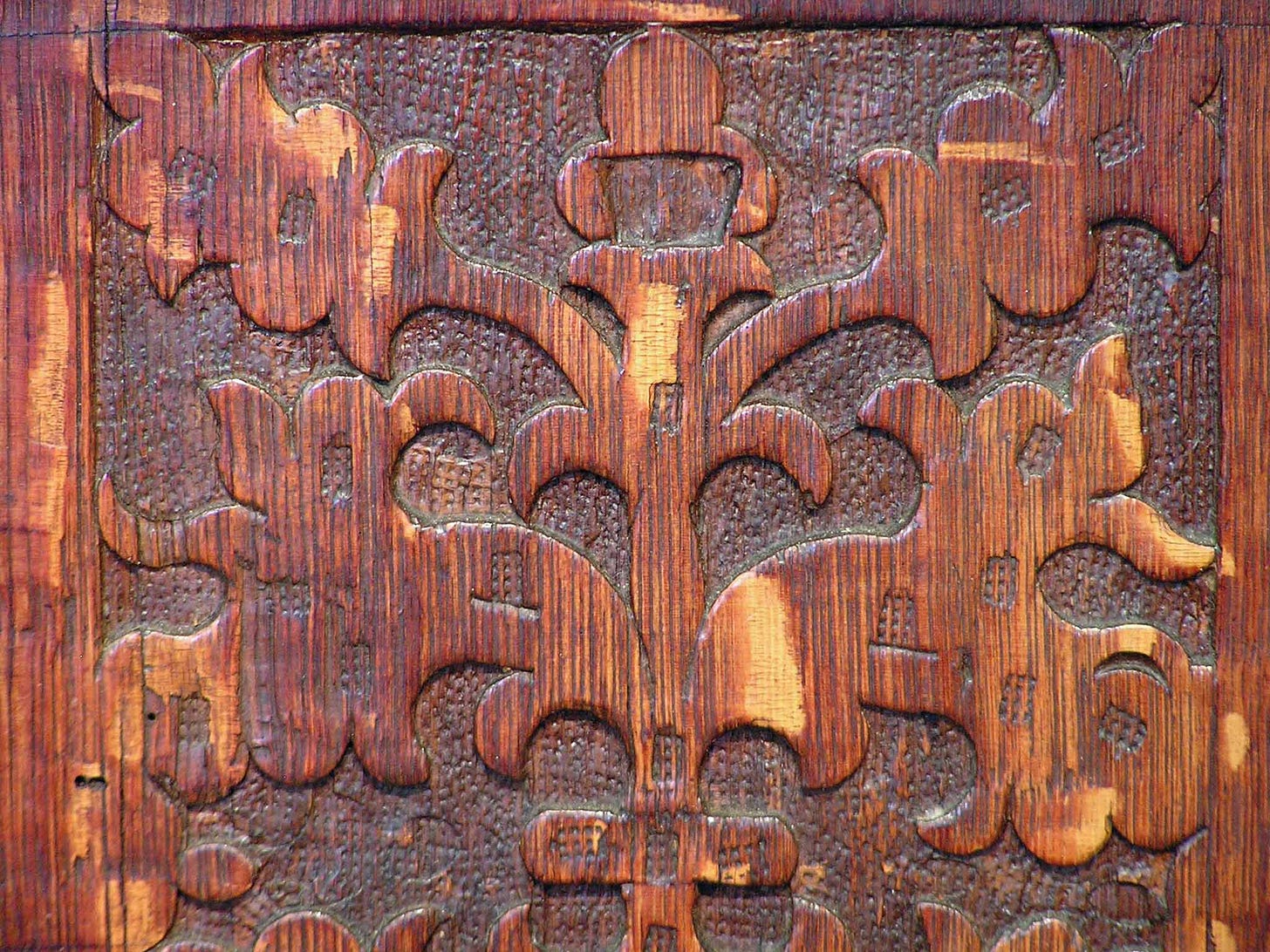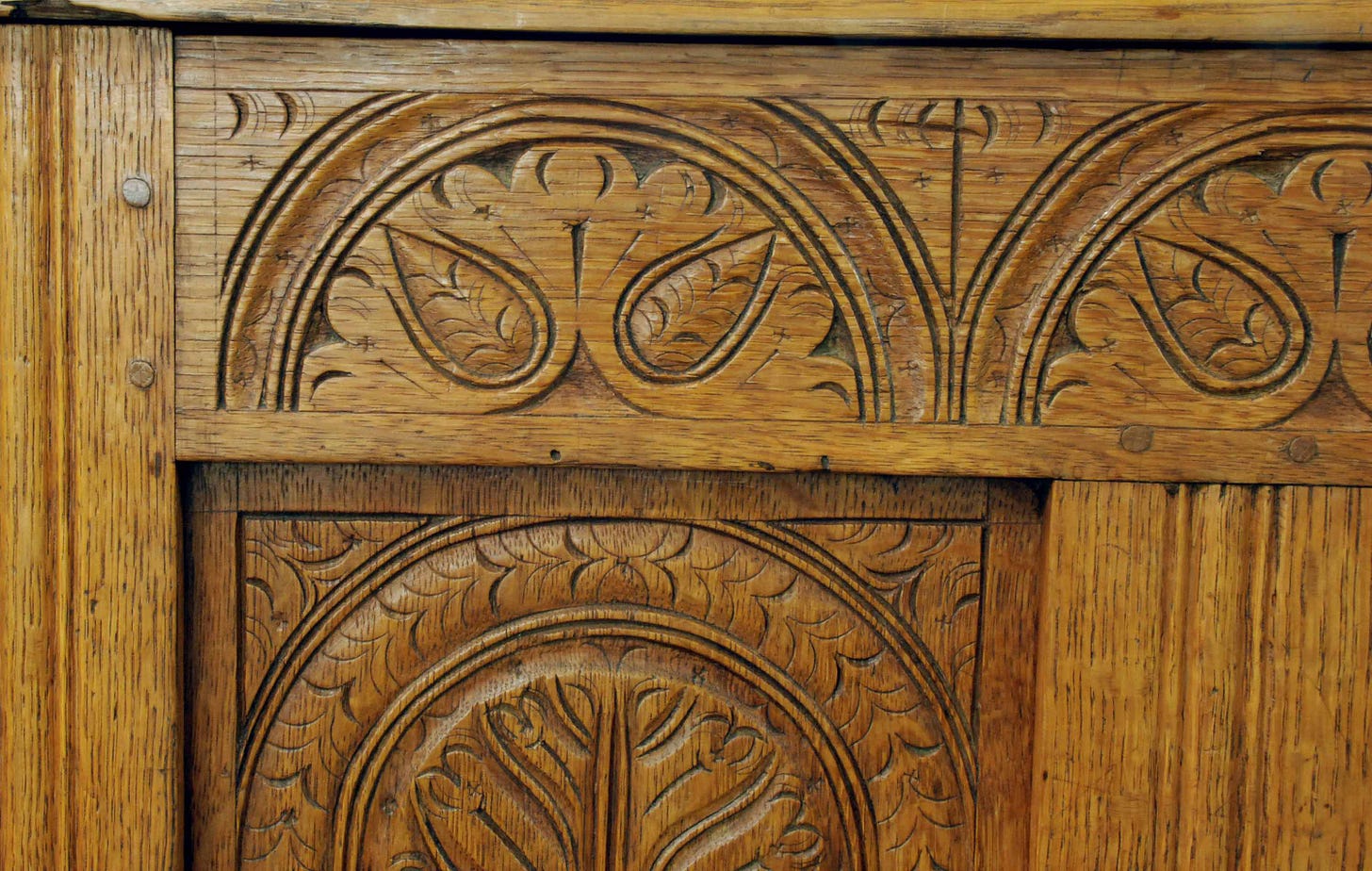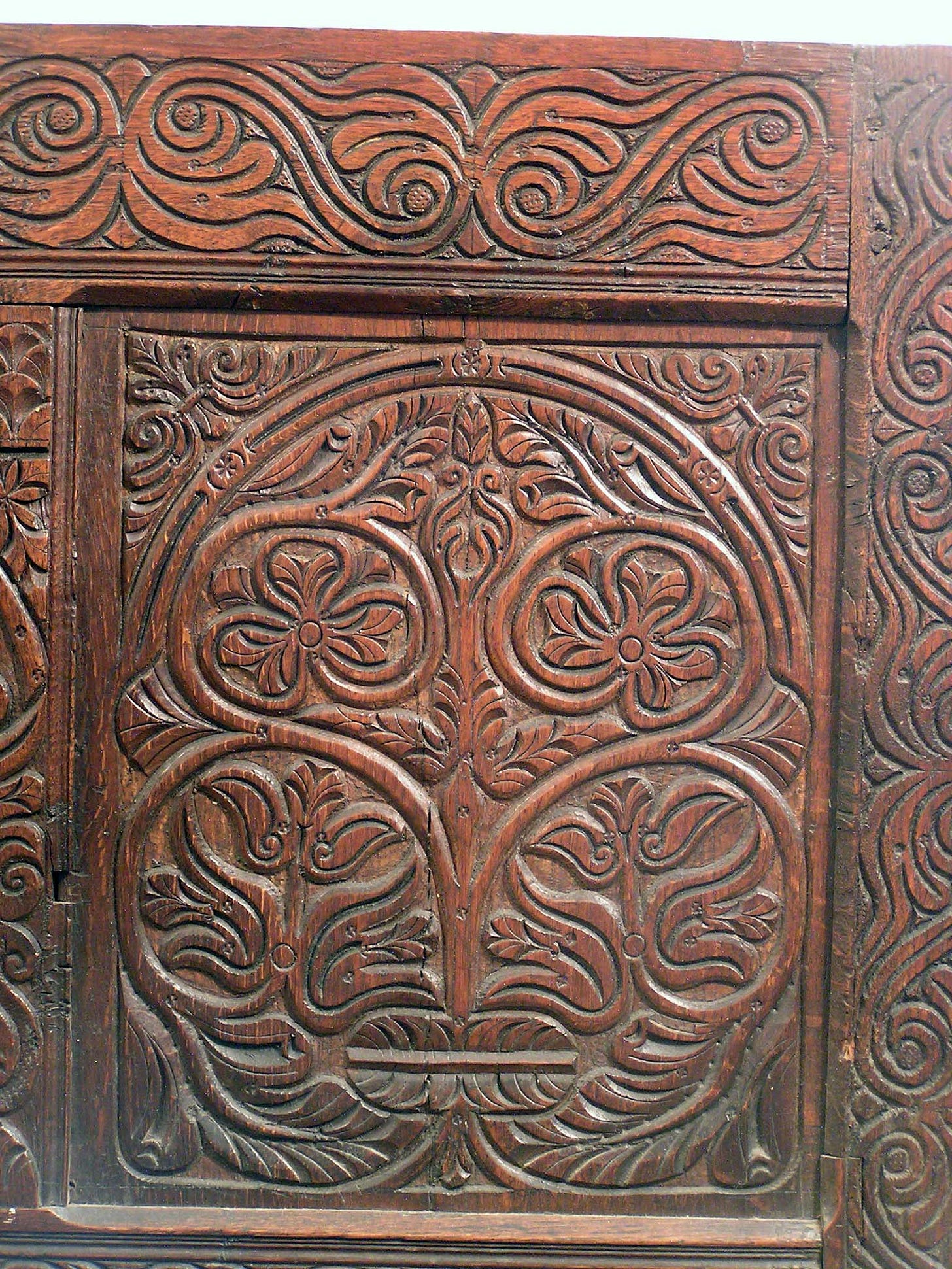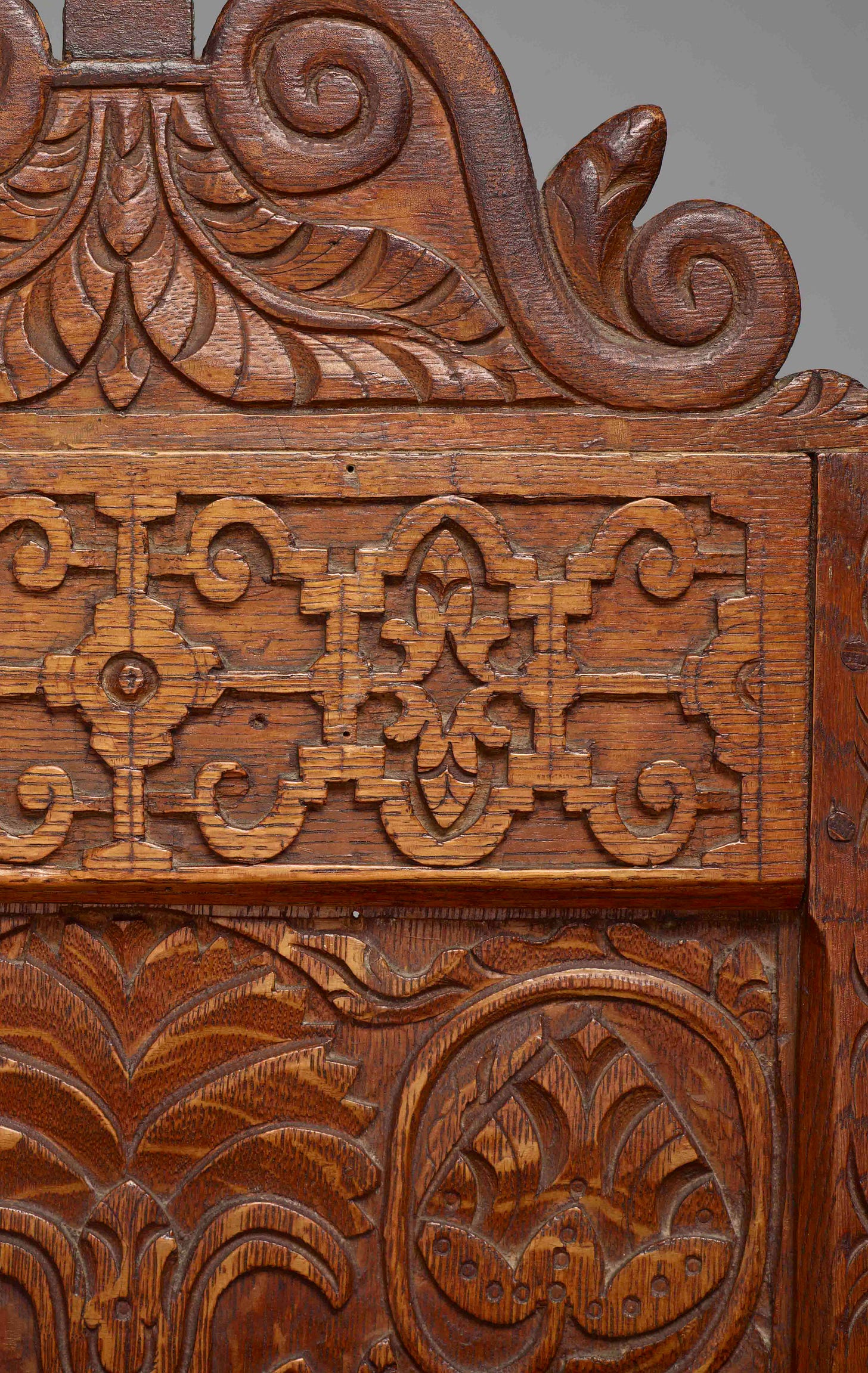I had a question a while back about the punches used in my carvings “have I ever seen them in collections of period tools?” - something along those lines. The short answer is - No. But I know they existed, because their impressions are on the period works. The photo above is a few of the ones I have - some I made, some friends made and as you see, one is a large nail set.
The background punch is probably the most common - and this carved panel detail from one of the Dedham, Massachusetts chests shows single impressions struck not on the background, but as a foreground accent. From that, I was able to see how many rows/teeth that particular punch had. It was about 1/4” x 1/2”.
The one I’ve used and known the longest is the Maltese cross on the Braintree works by William Savell and his sons - they weren’t afraid to use it. See it on the top rail, both inside and outside the lunette as well as many accents on the panels:
The Devon works and the related carvings from Ipswich, Massachusetts use punches a lot, often more than one in a carving. This is one of the Devon chests - see the large punch in the arch with 6 points and a smaller, square punch (another take on the Maltese cross) in the rest of the carving:
You’ll need to enlarge that - but the background on the panel is not punched - but that on the top rail, while not removed, is punched with a texture punch. So three punches at least here. Plus those closely-spaced dots - along the stalk in the top leaves - I’ve done dots like that with a fine nail set. Sometimes I think the period ones were actually just nails.
From the Thomas Dennis chair at Bowdoin College Museum of Art - a detailed look at the chair’s back:
Keep reading with a 7-day free trial
Subscribe to Follansbee's Substack to keep reading this post and get 7 days of free access to the full post archives.




